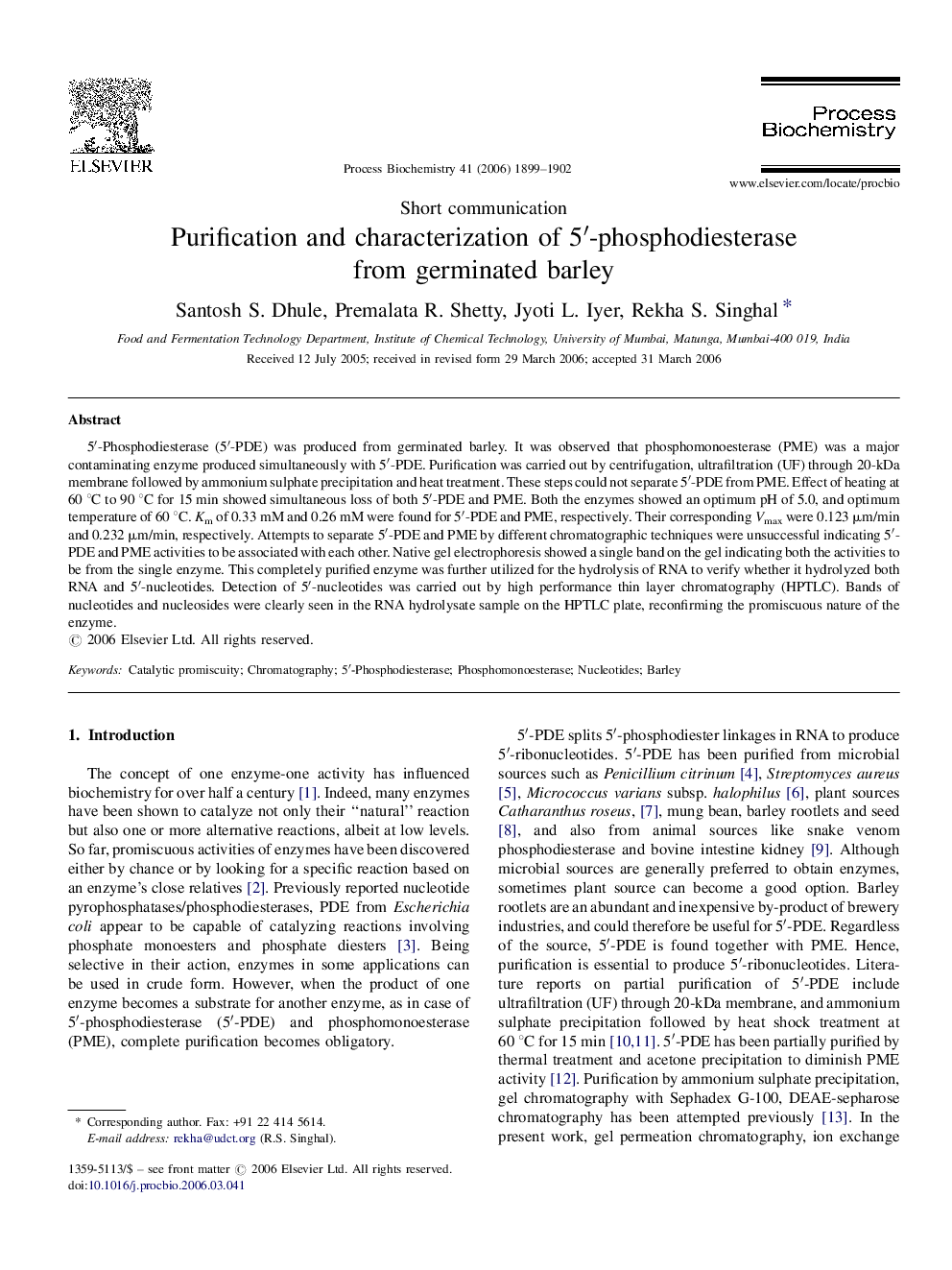| Article ID | Journal | Published Year | Pages | File Type |
|---|---|---|---|---|
| 36216 | Process Biochemistry | 2006 | 4 Pages |
5′-Phosphodiesterase (5′-PDE) was produced from germinated barley. It was observed that phosphomonoesterase (PME) was a major contaminating enzyme produced simultaneously with 5′-PDE. Purification was carried out by centrifugation, ultrafiltration (UF) through 20-kDa membrane followed by ammonium sulphate precipitation and heat treatment. These steps could not separate 5′-PDE from PME. Effect of heating at 60 °C to 90 °C for 15 min showed simultaneous loss of both 5′-PDE and PME. Both the enzymes showed an optimum pH of 5.0, and optimum temperature of 60 °C. Km of 0.33 mM and 0.26 mM were found for 5′-PDE and PME, respectively. Their corresponding Vmax were 0.123 μm/min and 0.232 μm/min, respectively. Attempts to separate 5′-PDE and PME by different chromatographic techniques were unsuccessful indicating 5′-PDE and PME activities to be associated with each other. Native gel electrophoresis showed a single band on the gel indicating both the activities to be from the single enzyme. This completely purified enzyme was further utilized for the hydrolysis of RNA to verify whether it hydrolyzed both RNA and 5′-nucleotides. Detection of 5′-nucleotides was carried out by high performance thin layer chromatography (HPTLC). Bands of nucleotides and nucleosides were clearly seen in the RNA hydrolysate sample on the HPTLC plate, reconfirming the promiscuous nature of the enzyme.
